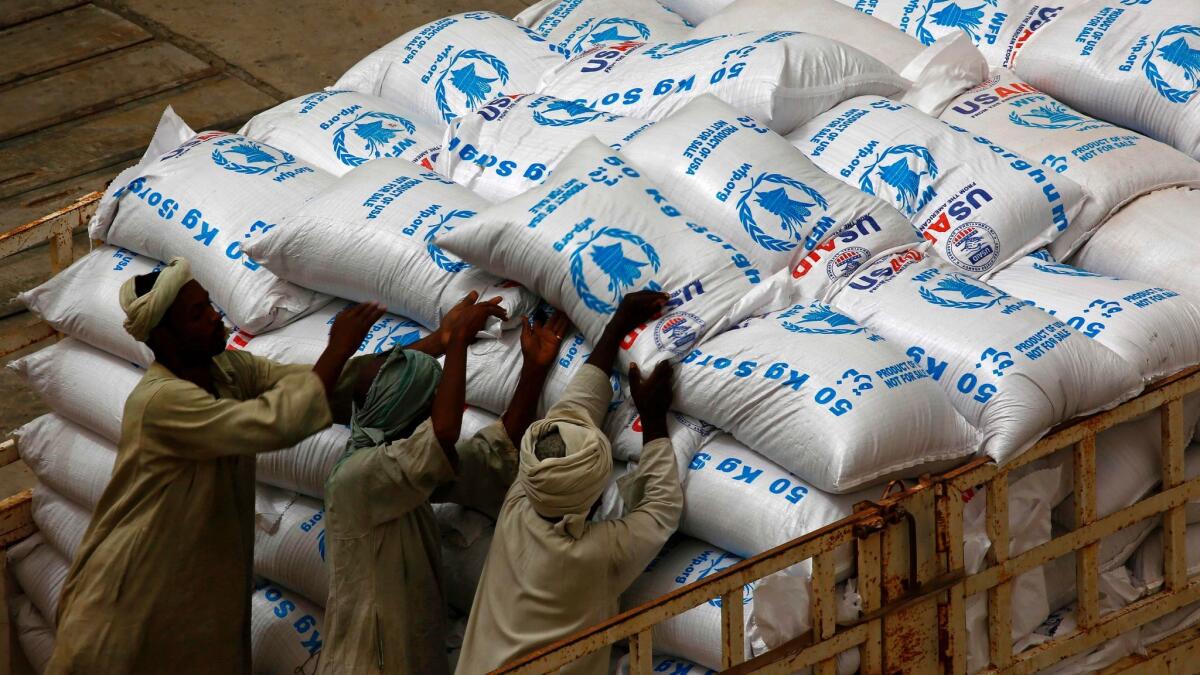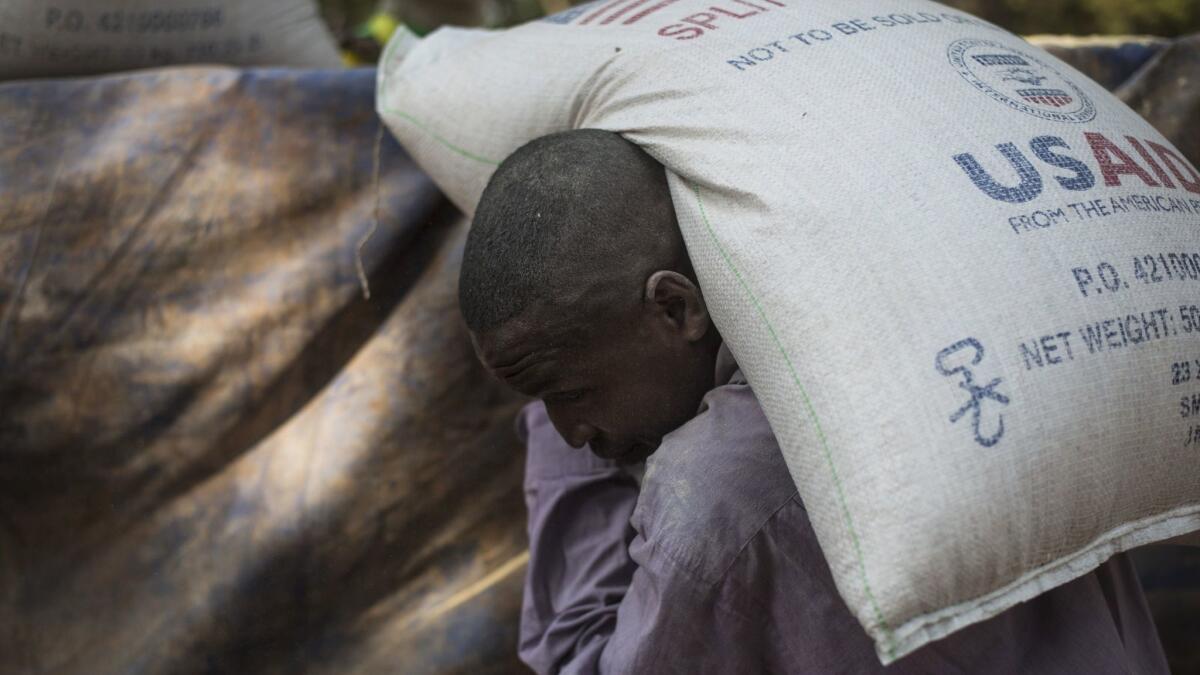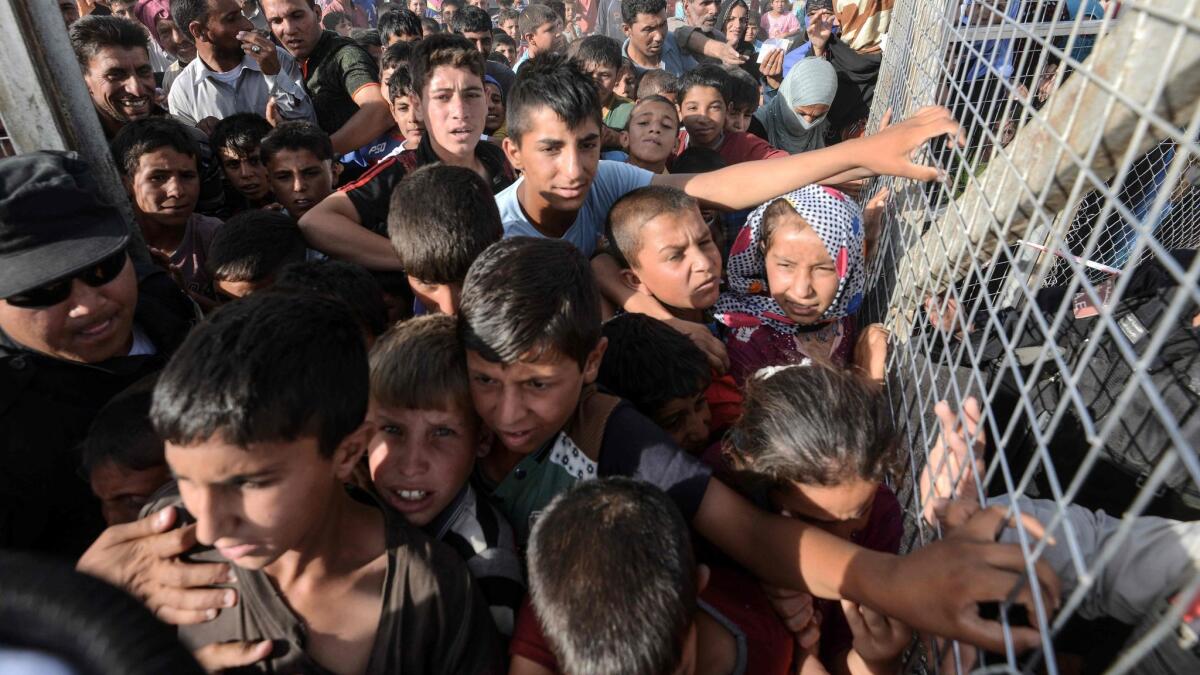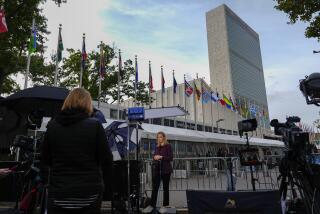The U.N. pledged to improve the lives of the world’s most needy. Enacting that plan is another matter

It’s been two years since the United Nations adopted 17 goals aimed at fighting poverty and inequality, protecting the environment and fostering peace.
The target year for achieving those goals is 2030, but that’s little time, given the scope of the agenda, and experts note formidable obstacles stand in the way of achieving these “sustainable development goals,” or SDGs.
“We had the SDG agreements in 2015. Everybody felt very good,” said Homi Kharas, co-director in the global economy and development program at the Brookings Institution.
But while there was progress in 2016 and 2017, there also was some regression, Kharas said. “The pace is not fast enough to achieve the SDGs. I feel that we are coasting somewhat,” he said.
Among other things, the 17 goals call for advances in education, wages, gender equality and human rights.
“The SDGs are very ambitious,” said Kal Raustiala, a law professor and director of the UCLA Burkle Center for International Relations. “One of the criticisms is that there are so many goals … with everything being a priority and therefore arguably nothing being a priority. So implementing them in full is hard to imagine.”
When the United Nations General Assembly on Tuesday begins discussions known as the General Debate, the subjects contained in the 17 goals will be among the issues that take center stage. Indeed, the debate theme is “Focusing on People: Striving for Peace and a Decent Life for All on a Sustainable Planet.”

Addressing the opening of the General Assembly on Tuesday, U.N. Secretary-General Antonio Guterres acknowledged the need to maintain momentum to achieve the goals.
“People around the world are rightly demanding change and looking for governments and institutions to deliver,” Guterres said. “We all agree that the United Nations must do even more to adapt and deliver.”
Some of the goals are more challenging than others.
Refugees on the move
According to the U.N. Refugee Agency, there are more than 65.6 million displaced people worldwide and about 22.5 million refugees, far surpassing the numbers after World War II.
“Migration is an enormously difficult issue because the source of migration is so different,” Kharas said.
It can be driven by conflict, economic opportunity and environmental stress, among other factors, Kharas said.
“When you look at all of that, it’s extremely daunting,” Raustiala said. “And then on top of it, at this particular political moment, there is so much antipathy toward immigration of any kind, let alone refugees in particular.”

The Trump administration wants reduce the number of permanent, legal migrants allowed into the U.S. each year and cap the number of refugees admitted each year to 50,000, down from a recent Obama administration level of 110,000. Migrants and refugees are also facing an increasingly hostile reception in Europe. In August, police used water cannons and batons against refugee squatters in Rome, and thousands of migrants have been languishing in an overcrowded camp in Greece for nearly two years.
Experts said many wealthy nations were not pulling their weight, leaving the burden of hosting most of the world’s refugees to just a few much poorer nations.

Millions go hungry
Global hunger is again on the rise, affecting about 815 million people — or 11% of the world’s population — in 2016, according to a U.N. report on food security released Friday. The statistic marks an increase of 38 million more hungry people on the planet since 2015.
The increase in hunger is largely due to a proliferation of violent conflicts and climate shocks, such as severe drought and flooding, the U.N. reported. This has led to mass displacement and the destruction of crops.
Experts said most hungry people don’t have the resources to grow or buy food. According to a July report from the U.N. secretary-general, “poverty has steadily declined but remains high and most pervasive in the least developed countries, with 51% of their total population, around 400 million people, still living in extreme poverty in 2016.”

Health and education out of reach
According to the U.N. secretary-general’s report, despite progress in narrowing the gap between rich and poor countries, “significant health inequities remain across countries and regions.” For example, on average, people in high-income countries live to be 80 years old, compared with those in low-income countries who live to be 61.
The range of the mortality rate for children under 5 is staggering — from 150 deaths per 1,000 live births in the Central African Republic to 4 deaths per 1,000 in Luxembourg, according to the U.N.
Education, meanwhile, remains out of the reach for millions of children worldwide.
Despite impressive increases in the enrollment of girls in school and a closing of the gender gap in primary school enrollment, gender disparities in access to education — particularly in upper secondary school education — persist in some regions, according to U.N. The agency reported that about 28 million young and adolescent girls remain out of school in sub-Saharan Africa, for example.
“Education is a sector where there is almost universal consensus that it is the key linchpin for achievement of almost all of the other goals, whether you’re talking about peace, or jobs, or even health, or poverty, or livable cities, or environmental awareness,” Kharas said. Even so, in the world of development assistance, education remains “one of the least well-funded sectors,” he said.
Advancements in education have also fallen victim to conflict. For example, in Syria an estimated 1.75 million children are out of school and most are up to six years behind in their reading and math skills, according to a report published in March by the International Rescue Committee.
To successfully implement the sustainable development agenda the U.N. needs money.
But “one of the big question marks continues to be funding, both for the U.N. and for development investment more generally,” said Jeremy Konyndyk, a senior policy fellow at the Center for Global Development and an expert in humanitarian response.
“You’re seeing some of the U.N.’s major donors, particularly the U.S. and the U.K., expressing a lot skepticism toward U.N. funding than we’ve seen in the past.”
The Trump administration’s initial aid budget put forward last spring would entail substantial cuts to U.N. aid programming and peacekeeping, among other areas.
President Trump was expected to host a meeting of global leaders on Monday to address the issue of U.N. reform and streamlining of funding for the organization, before formally addressing the world body on Tuesday.
Aid experts said the United States’ scaling back of its traditional support for U.N. funded programs, such as combating violence against women and ensuring access to reproductive health, could stymie progress.
As Konyndyk put it, “When the U.S. refuses to support the U.N., that makes that goal harder to achieve.”
For more on global development news, see our Global Development Watch page, and follow me @AMSimmons1 on Twitter
More to Read
Sign up for Essential California
The most important California stories and recommendations in your inbox every morning.
You may occasionally receive promotional content from the Los Angeles Times.











